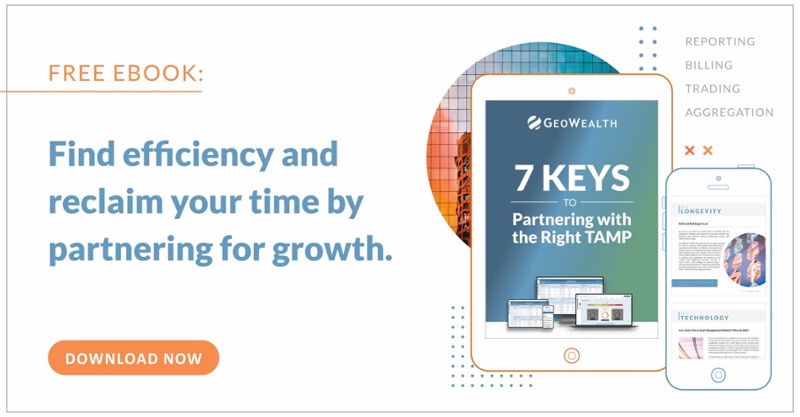Mastering the CEO Mindset: Change the Way You Measure Growth
Scale & Efficiency • Written by: Brendan Falls, CFP®

Mastering the CEO Mindset
For most RIAs, the advisor piece of running a financial advisory firm comes easily. Building strong client relationships, guiding progress toward goals, managing portfolios – all of these skills fall squarely in an advisor’s wheelhouse.
But what about running the business? Those executive leadership, decision-making and strategizing skills are just as important for the success of the firm, and advisors who are also RIA firm owners can’t afford to view their businesses solely through an advisory lens.
In this blog series, we’re offering practical guidance to help you master a CEO mindset and make running your firm more efficient, profitable, and scalable.
Change the Way You Measure Growth
Business growth is certainly a top priority for CEOs – including RIAs who also happen to be the CEOs of their firms. In the advisory world, though, growth is often measured by total assets under management (AUM) or total number of clients.
Thinking like a CEO, however, requires looking beyond those numbers to find out what’s impacting the firm’s profit margins and overall profitability, and making strategic decisions accordingly.
Exploring the AUM Paradox
Though it’s perhaps the most common measurement of AUM growth, relying solely on AUM can paint a misleading picture. Market volatility, like what we’ve experienced over the last few years, often leads to a decrease in AUM, even when new clients and accounts are being added. If you scale back on resources when AUM drops, you could end up understaffed and unable to properly service clients, impacting your ability to capitalize when markets rebound.
Why More Clients Can Actually Hurt Your Profit Margins
Adding new clients, while an indicator of growth, also means adding a host of administrative tasks, including paperwork, investment proposals, account opening, and asset transfers. While many of these can be automated and streamlined, there are still ongoing operations associated with each account to consider – namely, billing, reporting, and trading.
Recurring maintenance trades, which typically make up approximately 70-80% of an RIA’s trade volume and don’t necessarily require advisor oversight and attention, can significantly slash profit margins. If these trade types aren’t automated and need to be executed manually for each client, adding new clients can quickly drain resources and negatively impact profitability.
What to Measure Instead
Client Households Per Staff Member:
An important measure of your firm’s ability to scale is the ratio of client households and relationships to staff members. Research suggests an ideal range of 50 - 150 clients per advisor, but keep in mind this doesn’t necessarily translate to high-net-worth individuals who may require more customized, higher-touch service.
Overhead Cost Reduction:
Lowering overhead costs naturally increases profitability, provided doing so doesn’t negatively impact the client experience. Leveraging an outsourced partner for investment management, compliance, billing, and trading (particularly those recurring maintenance trades we mentioned earlier) can improve operations and enable staff to focus on higher-value activities. Closely tracking outsourced spend and year-over-year savings will help you quantify the benefits.
Time Optimization:
Using high-value people to perform redundant, low-value tasks eats into your firm’s profit margins, decreases scalability and can even cause friction within your employee relationships. Regulating operational tasks wherever you can, such as having a set list of model portfolios or standardizing billing, helps advisors to optimize the way they spend their time.
Generational Retention:
Maintaining and strengthening relationships with children of current client households represents a powerful growth opportunity, as it allows you to capture assets without the associated net new acquisition costs.
Improved Analytics, Improved Outcomes
While AUM and number of clients are still useful metrics, they don’t fully convey a firm’s operational efficiencies, capacity gains and future opportunities. Tracking productivity, efficiency, and retention as they impact profitability and scale will help you improve decision making, allocate resources more effectively and optimize the client experience.

